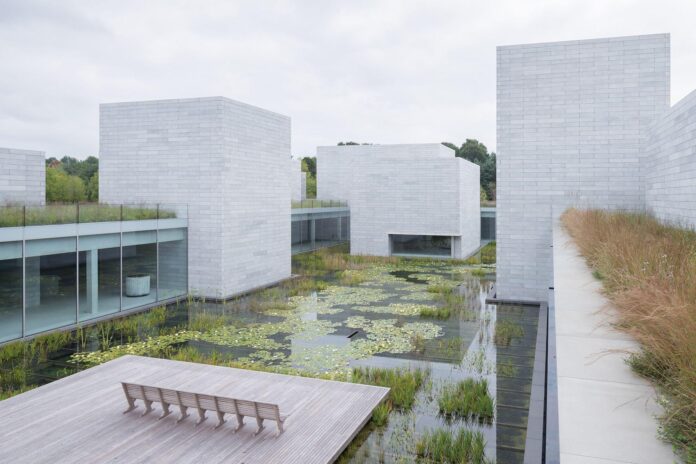The US artist Arthur Jafa is planning to unveil a permanent piece at the private Glenstone Museum in the Washington, DC suburb of Potomac, Maryland. Emily Wei Rales—the museum’s co-founder, chief curator and director—revealed on the podcast The Art World: What If…?! that “we are working with Arthur Jafa on something very special, and I can’t say any more about it because it’s very early stages. But he is thinking through a permanent installation of his work here at Glenstone”.
Jafa is known for simultaneously intricate and sweeping moving image works, including the searing seven-minute film Love is the Message, the Message is Death (2016), which evocatively conveys the experiences of Black American communities, bringing together clips from sources including television news, police footage and pop videos set to Kanye West’s 2016 song Ultralight Beam. (Jafa’s work was previously the subject of a long-term display unveiled at Glenstone in 2021.)
“[Jafa] goes to those places where many artists or many people wouldn’t dare go to,” Rales tells the podcast’s host, Charlotte Burns (a former editor at The Art Newspaper). “Having been on the margins of the art world for so long because he was a cinematographer, he could see what was happening, but he wasn’t quite in it. So he has a sort of freedom to experiment.”
Rales adds, “Listening to artists who have made social justice a primary part of their practice is another thing I want to explore—artists like LaToya Ruby Frazier, for whom her art practice and the work she does in communities is one and the same. I’m thinking through putting together an advisory board of people just like that who have given themselves permission to think much more broadly about the art world because the art world is very small.”
Glenstone houses the collection of the foundation, which was established by Mitchell Rales—the co-founder of the conglomerate Danaher Corporation whose personal net worth is $5.6bn according to Forbes—and his wife Emily, who co-founded the institution in 2006. The couple lives on the surrounding property, which covers 300 acres of natural pasture and woodland overseen by the foundation.
Earlier this year, the Glenstone Foundation, which supports the Glenstone Museum, received a $1.9bn donation from Mitchell Rales. The extraordinary sum—one of the largest-ever gifts to the arts—increases the foundation’s total net assets to $4.6bn, which is nearly equivalent to that of the most-visited museum in North America, the Metropolitan Museum of Art, according to Bloomberg.
On the podcast, Emily Wei Rales says of the donation: “$1.9bn isn’t enough for perpetuity, so this is just the first tranche we are sending to the foundation and more will follow with time.”
Host Charlotte Burns also discusses Glenstone’s forthcoming blockbuster Ellsworth Kelly show—Ellsworth Kelly at 100 (4 May-March 2024)—which is due to tour to the Middle East. “[It is] the centennial of his birth, and it’s a major survey show opening in May. It’s going to travel to Paris to the Fondation Louis Vuitton next spring. Then it’s going to go to the Fire Station in Doha in Qatar that autumn, which will be the first time Ellsworth Kelly’s been in that region. It’s going to feature 70 works from [the Glenstone] collection, as well as [works from] major museum lenders,” Burns says.
Asked why Glenstone collects and shows mainly Western artists, Rales says: “So I made the 180 degrees shift because I have Chinese heritage, and a lot of these objects and artifacts are tomb goods, tomb artefacts. Something in me felt fundamentally uncomfortable with the notion that these things were coming up from burial grounds and finding their way to the market and being sold to American and European collections.” She adds, “It felt like I was turning my back on part of my history and I wasn’t being responsible with these objects.”
Rales also reveals how the museum commissions visitor figures studies, comparing Glenstone to the Broad museum in Los Angeles and the Whitney Museum of American Art in New York. “While the Broad and the Whitney each saw around 1 million visitors in 2019, we hosted one 10th of that number in our first year of operation,” Rales wrote in 2020, adding that the plan is to give visitors a “slow, quiet’ and contemplative experience.
“Most museums aren’t going to commission studies like this because they’re not concerned about density. How we came up with these numbers was quite easy. You just looked at the annual attendance of a place like the Guggenheim. You calculate the number of square feet available for the public to occupy. And then you just figure it out,” Rales adds.

























